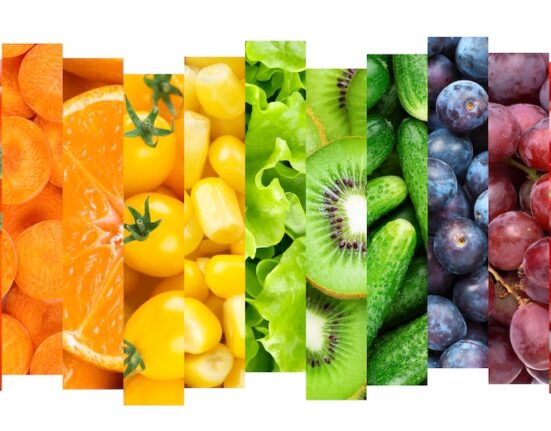Dr. Borlaug (third from left) training scientists in Mexico (Credit: International Maize and Wheat Improvement Center, via Flickr)
“It wasn’t supposed to be like this.” A sentiment that American agronomist and Nobel Peace Prize recipient Norman Borlaug would surely be thinking if he were still alive today. After all, he was the man tasked with averting world hunger while minimizing environmental degradation. Following World War II, the global population surged due to medical advancements, but crop yields lagged behind. By the early 1960s, the threat of mass famine, particularly in Asia, loomed large and people were desperate for a solution.
Borlaug, who grew up on a farm in Iowa and held a PhD in plant pathology and genetics, was dispatched to Mexico in 1944 by the Rockefeller Foundation, a New York-based philanthropic medical research and arts-funding organization. His mission? To tackle the wheat production issues caused by stem rust, a disease caused by the fungus Puccinia graminis. Borlaug was able to develop semi-dwarf, high-yielding, disease-resistant wheat varieties that not only benefited Mexican farmers but also those in other countries facing food shortages. These breakthroughs in wheat, and later rice varieties, marked the advent of what would come to be known as the Green Revolution.
In many ways, the Green Revolution was a great success. It increased food production and prevented famines in several countries, notably India and Mexico, transforming them from food importers to food exporters within a few years. However, like many initiatives that seem too good to be true, this agricultural transformation also sowed the seeds for the breakdown of our food system. In fact, many of the challenges we face today concerning environmental, economic and social sustainability can be traced back to this pivotal moment in history.
Environmental Consequences
At the heart of the Green Revolution’s success was its new, high-yielding varieties. These varieties had delivered remarkable yields compared to traditional ones, but they also necessitated increased application of chemical fertilizers and water. This is hardly surprising—if you want a plant to grow faster and stronger, you must feed it more, and what do plants eat? Nutrients (in the form of fertilizers) and water. This heightened demand for fertilizers coincided favorably with initiatives by the U.S. government and corporations. Post-World War II, the United States had surplus stocks of chemicals and pesticides initially used to combat diseases like malaria, lice and bubonic plague. Subsequently, there was a push to expand markets for these products, finding a perfect fit in the agriculture sector.
Unfortunately, studies have shown that prolonged use of these chemical inputs disrupts natural soil nutrient cycles. In many regions, soils have lost their organic content, diminishing their capacity to retain water and support robust plant growth. Consequently, farmers find themselves trapped in a cycle where they must continually increase chemical inputs to sustain yields, perpetuating a destructive pattern.
While those chemicals destroy soils, they can also be found in rivers, lakes and oceans via runoff from fields. Not only does this pose immense harm to aquatic ecosystems but also jeopardizes the availability of reliable water resources. The increasing demand for water has led to over-extraction, causing groundwater levels to plummet and threaten the long-term sustainability of agriculture in many regions. Unlike nutrients, water cannot be chemically produced.
While the impacts on soil and water are already concerning, these environmental catastrophes are exacerbated by the promotion of high-yield varieties, which in turn leads to increased conversion of land for agricultural production. This would have been particularly painful for Borlaug, who hoped that more productive varieties would reduce land use. Instead, we’ve seen large monoculture farms replace rich, biodiverse ecosystems. As our food system continues to focus on high-yielding varieties we are reducing the genetic diversity of agriculture.

But why should we care? As biodiversity declines, crops become more vulnerable to pests and diseases, which can spread more easily in monoculture systems—just look at bananas. Furthermore, biodiversity loss diminishes the resilience of agricultural systems to adapt to changing conditions. We can only engineer our way out of problems for so long. We must recognize that it is from nature that we source the genetics to breed new varieties. As we destroy the heterogeneity of our foods, there will eventually come a point where we’ve exhausted the genetic material for us to use in engineering our food.
Economic and Social Impacts
The environment is not the only area under threat, although it often receives the most attention. The Green Revolution has also had an immense impact on farmers, rural communities and consumers. Success in this new agricultural era required substantial capital to invest in chemical inputs, irrigation systems and seeds—resources that many smallholder farmers lacked. In fact, many of these smaller farms became indebted to larger, wealthier farms or had to sell their land altogether. Even those who could invest faced ongoing economic struggles due to dependency on expensive proprietary seeds, fertilizers and pesticides, making them vulnerable to price fluctuations and the policies of multinational agribusinesses. These high costs, especially in recent inflationary times, have eroded farm profitability and financial stability.
Prior to the Green Revolution, farmers saved and replanted their seeds, remaining independent of companies. They also possessed extensive knowledge of their land’s needs. As modern agricultural practices were promoted and, in many cases, forced upon farmers, much of the traditional farming techniques and centuries of knowledge were lost. This loss of cultural heritage and indigenous agricultural practices undermines the diversity of approaches that can be applied to address local environmental and social challenges.
As smallholder farmers suffer, so do all of us who consume these fresh fruits and vegetables. The Green Revolution’s focus on increasing the yields of staple crops has had serious implications for human health and nutrition. We know this revolution helped to avert famines by increasing the availability of calories, but this came at the sacrifice of nutritional diversity. Diets in many regions of the world have become increasingly reliant on just a handful of staple crops leading to significant deficiencies in essential nutrients and a rise in malnutrition, even in those areas where food production has increased.
Moving Toward Sustainable Solutions
The current food system, established over 60 years ago during the Green Revolution, is unsustainable and must evolve to protect both people and the planet. But what does a resilient food system of the future look like? This is a question many are trying to answer.
As a first step, we must reintegrate ecological principles into agricultural practices. This means emphasizing biodiversity, soil health and natural pest control in everyday farming processes. Allowing nature to take more control can help the land heal, reducing reliance on chemical “performance-enhancing drugs.” Think of it as a detox process for the land.
Promoting crop diversity is another critical piece of the puzzle. Through increasing crop diversity, we can reduce the risks associated with monocultures and enhance the nutritional quality of our food. Encouraging the cultivation of traditional and indigenous crops can preserve agricultural biodiversity and cultural heritage.
Perhaps most important, however, is supporting smallholder farms. During and following the Green Revolution, farmers across the world were pressured, and in some cases forced, to adopt these new practices to ensure they could carry on with their profession, which for many has been a tradition passed down through generations. Most farmers do not want to rely on chemicals, grow monocultures or depend on corporations for seeds. For our food system to thrive, policies and programs must help smallholder farmers adopt sustainable practices, providing technical assistance and fair market opportunities. We often forget that many smallholder farmers and their ancestors have worked their lands for hundreds, if not thousands, of years. We must respect the knowledge and expertise of these farmers and be willing to listen and learn from them if we are to transition to a more sustainable food system.
The Green Revolution had the very best intentions at its core: to feed more people while reducing environmental degradation. However, like many well-intended revolutions throughout history, it was hijacked by power and profit. By understanding the past and learning how we arrived at this moment, we can work towards a future where food security does not compromise the health of our planet and its people. Our food system should not be one based on monocultures and industrial processes, but rather on nature’s diversity and wilderness. After all, nature already holds the key to a thriving food system—one that has sustained us for millennia. By listening to nature and applying modern knowledge, we can repair our food system, and with it, our planet and its people.
- John Paap is the Sustainability and Brand Marketing Manager at Jac. Vandenberg, Inc. and co-host of the “History of Fresh Produce” series on The Produce Industry Podcast.





